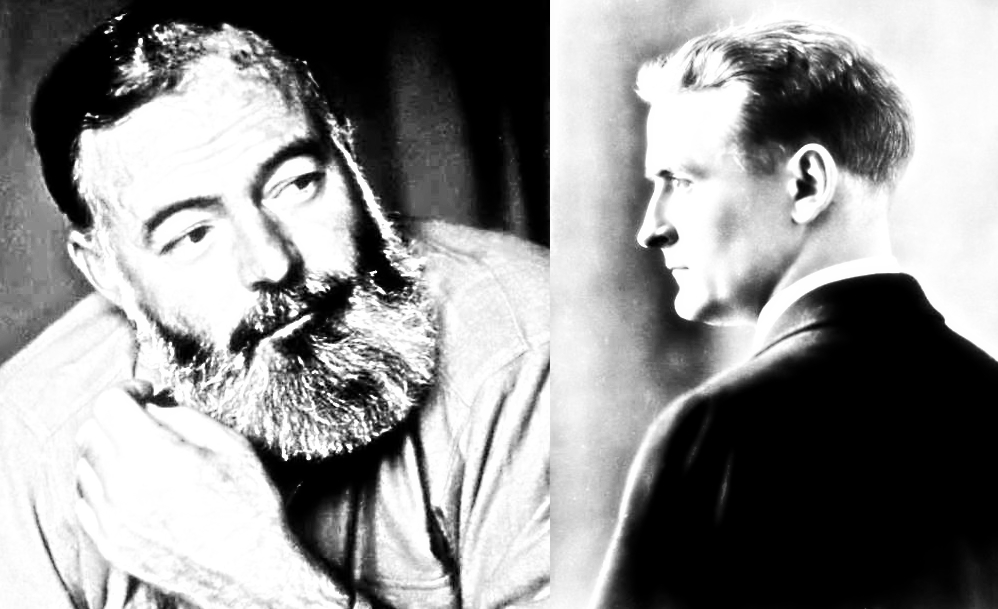What is good action in a narrative?
Here’s a scene from I am Legend by Richard Matheson, a story about the last man on Earth combatting mutated vampires of the night:
Fury exploded in him. Enough!
His rage palsied hands ripped out the clothes from the bureau drawer until they closed on the loaded pistols.
Racing through the dark living room, he knocked up the bar across the door and sent it
clattering to the floor. Outside, they howled as they heard him opening the door. I’m coming out, you bastards! his mind screamed out.
He jerked open the door and shot the first one in the face. The man went spinning back off
the porch and two women came at him in muddy, torn dresses, their white arms spread to enfold him. He watched their bodies jerk as the bullets struck them, then he shoved them both aside and began firing his guns into their midst, a wild yell ripping back his bloodless lips.
He kept firing the pistols until they were both empty.
The action is palpable, especially if you have the full context of the protagonist’s torment. While it comes off seemlessly in this excerpt (thanks to Matheson’s adroit narration), writing action can be difficult.
Today on the blog, we are going to look at tips on writing action, examine some examples from other texts, and provide a well-rounded approach to incorporating a more heart-pounding style into your writing.
What is action in writing?
Action in writing is dependent upon the movement of the character, whether that be through thought or action. Thus, we have to deal with verbs in many settings. Verbs, as we know, are action words, and action words thrust the story forward and can show how are characters are feeling and what they are made of in a situation.
As such, writing effective action scenes in a story is a craft that requires a delicate balance between vivid description, pacing, and emotional engagement. Whether it’s a thrilling sword fight, a high-speed chase, or an intense battle of wits, well-crafted action sequences can elevate a narrative, keeping readers on the edge of their seats.
Setting up the action is just as important
When action does not seem to play well in a piece of writing, you can almost always pinpoint the setting as the problem. Where are the characters? Why is the scene not ringing true to me at the moment?
In Robert E. Howard’s novella The Phoenix on the Sword, that features his classic character Conan, the author sets the stage for a violent sword fight between the barbarian king and a litany of assassins.
Howard writes: “Alone in the great sleeping-chamber with its high golden dome King Conan slumbered and dreamed … Through the silence which shrouded the corridor of the royal palace stole twenty furtive figures. Their stealthy feet, bare or cased in soft leather, made no sound either on thick carpet or bare marble tile. The torches which stood in niches along the halls gleamed red on dagger, sword and keen-edged ax … They crowded back behind a cluster of carven pillars, and almost immediately ten giants in black armor swung by at a measured pace.”
In this example, Howard has set the stage for violence and action. We know where they are, we have some extra details, and though cliche in it presentation, the colloquial quality draws the reader into the story. We know this place well.
With that said, before diving into the action, it’s crucial to establish a clear and immersive setting. Provide the reader with enough details to visualize the environment, including the time of day, weather conditions, and any unique features that might impact the action. A well-described setting not only grounds the reader in the scene but also enhances the overall atmosphere, setting the tone for the impending action.
Engaging the reader through characterization
As with many narrative writing techniques, one can’t expect readers to just gravitate to their writing because the sentences are neat and look nice. There are many examples of bad writing and good storytelling–it happens. But the reason this happens is because some authors have a better command of their characters and their stories as a whole. That is to say, if a reader does not buy into your characters, it’s going to be more difficult to sell the action.
In J.R.R. Tolkien’s The Hobbit, the reader cares very much for Bilbo Baggins. The reader cares about him because Bilbo is more like us than we’d like to admit. He appreciates comfort, he does not want to be bothered most of the time, and house guests often overstay their welcome. We can empathize with all of those notions.
As such, when Bilbo is captured by a group of hungry trolls, we worry about him, and when the dwarves come into the fray to rescue him, the action feels more grounded.
“Thorin came last–and he was not caught unawares. He came expecting mischief, and didn’t need to see his friends’ legs sticking out of sacks to tell him that things were not all well … and he jumped forward to the fire, before they could leap on him. He caught up a big branch all on fire at one end; and Bert got that end in his eye before he could step aside. That put him out of the battle for a bit. Bilbo did his best. He caught hold of Tom’s leg–as well as he could, it was thick as a young tree-trunk–but he was sent spinning up into the top of some bushes, when Tom kicked the sparks up in Thorin’s face.”
Compelling action relies heavily on reader investment in the characters involved. Characters should be well-developed, and their motivations and stakes in the action should be clearly conveyed. In other words, readers should care about the outcomes and be emotionally connected to the characters; this connection heightens the impact of the action and makes it more than just a series of events, as the scene becomes dynamic.
Pacing the action makes for epic conclusions
Pacing is a crucial component of storytelling, from how the plot plays out to how the action unfolds. If you have an action-packed scene, it needs to have its own flow. It can not be just a series of “and then, and then, and then.” It must have meaning and it must be conveyed with meaning.
Let’s get back to Robert E. Howard’s Conan in The Phoenix on the Sword:
“With a yell that rang to the roof, the killers flooded into the room, Gromel first. He came like a charging bull, head down, sword low for the disembowelling thrust. Conan sprang to meet him, and all his tigerish strength went into the arm that swung the sword. In a whistling arc the great blade flashed through the air and crashed on the Bossonian’s helmet. Blade and casque shivered together and Gromel rolled lifeless on the floor. Conan bounded back, still gripping the broken hilt.”
We understand at this point that assassins have come to claim Conan’s life in his throne room, but we also know Conan as a character–and we know he will not go down without a fight. The excerpt is the first in an epic scene of bloodshed and feverish action that pits a large group of men against one aging, yet ravenous, barbarian of the Cimmeria.
In this next excerpt, Conan has been wounded by a dagger and the leader of the assassins, Ascalante, forces a few of his men to guard a door against Conan’s escape; however, this gives Conan time to grab an axe from the wall. In this part of the action, we have gone from the initial confrontation to a point where Conan is cornered, which ups the ante of the scene, and now he flings himself into combat with a centuries-old axe if only to die fighting.
“As he sprang from the wall his ax dropped an outlaw with a severed shoulder, and the terrible back-hand return crushed the skull of another. Swords whined venomously about him, but death passed him by breathless margins. The Cimmerian moved in, a blur of blinding speed. He was like a tiger among baboons as he leaped, side-stepped and spun, offering an ever-moving target, while his ax wove a shining wheel of death about him.”
The pacing of this scene is extraordinary and Howard shows his deft ability to control the action, inciting fear and anxiety in the reader, and ultimately relief as Conan slays a roomful of villains.
Conclusion
Action can be difficult to write, but with the right consideration, writers have the ability to show a person struggling against mutant vampires, fantasy characters captured by trolls, or a barbarian fighting for his life against a multitude of assailants. Just remember to be mindful of your setting–where the action takes place, the characters themselves and how they respond to situations, and the pacing of your action scenes. With these few considerations, the action in your stories should come alive.
Works Cited
Howard, Robert E. “The Phoenix on the Sword.” The Coming of Conan the Cimmerian, edited by Patrice Louinet, Del Rey, 2003, pp. 3-28.
Matheson, Richard. I Am Legend. Tor Books, 1995.
Tolkien, J.R.R. The Hobbit. Houghton Mifflin, 1937.







